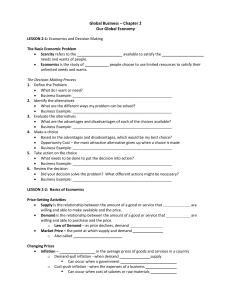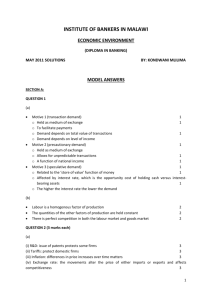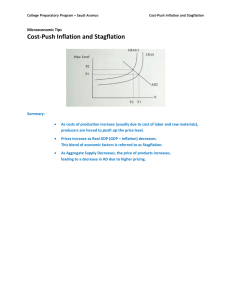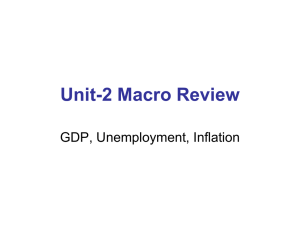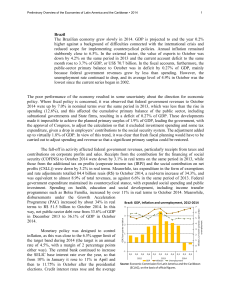Suggested Solutions to Assignment 1
advertisement
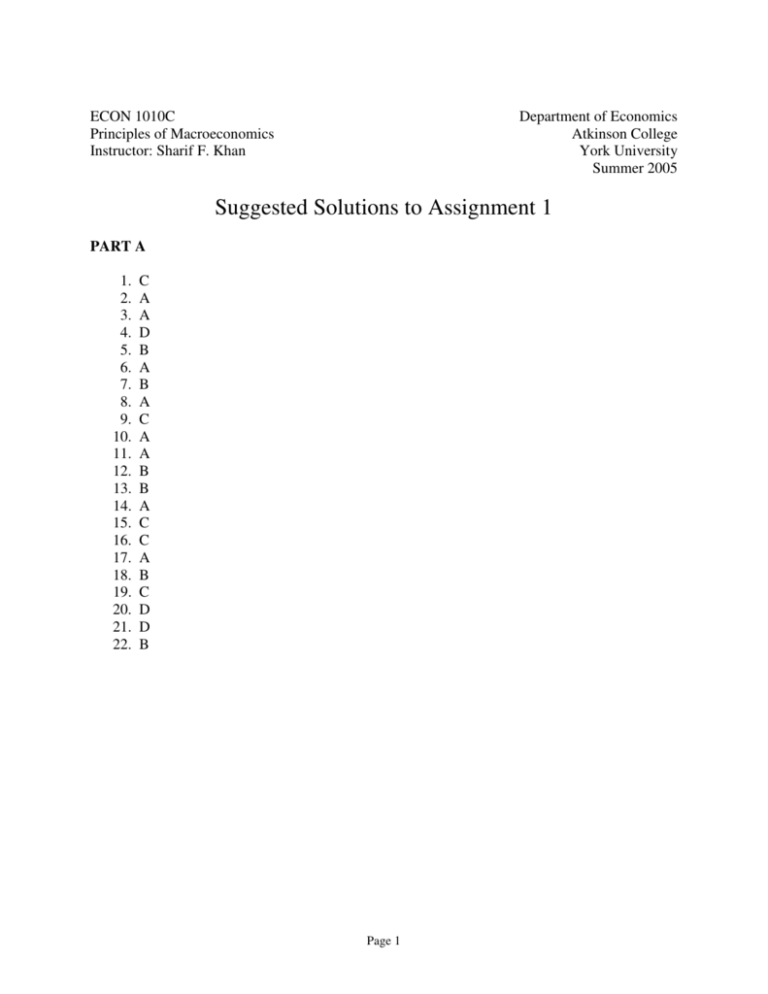
ECON 1010C Principles of Macroeconomics Instructor: Sharif F. Khan Department of Economics Atkinson College York University Summer 2005 Suggested Solutions to Assignment 1 PART A 1. 2. 3. 4. 5. 6. 7. 8. 9. 10. 11. 12. 13. 14. 15. 16. 17. 18. 19. 20. 21. 22. C A A D B A B A C A A B B A C C A B C D D B Page 1 PART B B-1. Exports are subtracted from imports in calculating Canadian GDP because exports are not available for domestic consumption. False. In the expenditure method, imports are subtracted in calculating GDP because imports are not produced within the national boundary of Canada. On the other hand, exports should be included in GDP because exports are produced within Canada. In the expenditure approach, GDP is calculated as follows: GDP = C + Ig + G + (X-M) where, C= Personal Consumption Expenditure Ig = Gross Investment G = Government current purchases of goods and services X = Exports M = Imports B-2. Unanticipated inflation benefits creditors and savers. False. Unanticipated inflation hurts both creditors and savers. Unanticipated inflation hurts savers. As prices rise, the real value, or purchasing power, of an accumulation of savings deteriorates. Paper assets such as savings accounts, insurance policies, and annuities that were once adequate to meet emergency financial needs decline in real value during inflationary periods. For example, a household may save $1000 in a guaranteed certificate (GIC) in a chartered bank at 6 percent annual interest. But if inflation is 13 percent, the real value or purchasing power of the $1000 will be cut to about $998 by the end of the year. Although the saver will receive $1060 (equal to $1000 plus $60 of interest), deflating that $1060 for 13 percent inflation means that its real value is only about $938 (= $1060 ÷ 1.13). Unanticipated inflation harms creditors (lenders). Suppose Manitoba Bank (creditor) lends Bob $1000, to be paid in two years. If in that time the price level doubles, the $1000 that Bob repays will have only half the purchasing power of the $1000 he borrowed. Because of inflation, each of those dollars will only buy half as much as it did when the loan was negotiated. As prices go up, the value of the dollar goes down. Thus, the borrower is lent “dear” dollars but, because of inflation, pays back “cheap” dollars. The owners of Manitoba Bank suffer a loss of real income. Page 2 PART C C-1. Chapter 7 Problems and Exercises Question No. 5 a. The expenditure approach: GDP = C + I + G + (X – IM) = 700 + 500 + 300 + 275 = 1775 GNP = C + I + G + (X – IM) + net foreign factor income = 700 + 500 + 300 + 275 + (–3) = 1772. The income approach: National income = wages + rents + interest + profits = 972 + 25 + 150 + 500 = 1,647. GNP = NI + indirect business taxes less subsidies+ depreciation = 1,647 + 100 + 25 = 1772. GDP = GDP – net foreign factor income = 1775. b. NDP = GDP – depreciation = 1775 – 25 = 1750. NNP = GNP – depreciation = 1772 – 25 = 1747. National income = wages + rents + interest + profits = 972 + 25 + 150 + 500 = 1,647. c. PI = NI + transfers — corporate income taxes – undistributed corporate profits – EI and CPP contrib. = 1647 + 0 – 215 – 60 – 0 = 1372. d. DPI = PI – personal taxes = 1372 – 165 = 1207. C-2 Chapter 7 Problems and Exercises Question No. 7 a. 2001: 7813; 2002: 8146.2; 2003: 8496.6; 2004: 8848.9. b. Since inflation was positive in every year, nominal GDP growth always exceeded real GDP growth in each of the last three years. c. It is impossible to say in which year society’s welfare increased the most. GDP measures market activity, not welfare. Page 3 C-3 Chapter 8 Problems and Exercises Question No. 7 7. a. It exhibits decreasing marginal productivity. b. If the population is at L1, it will grow. The surplus food is shown by Q1 – S1. Subsistence level of output Output Production function Q* Q1 S1 L1 L* L2 Labor c. At L2 population is declining because there is not enough food to go around. d. The intersection of the two curves gives the level of population, L*, at which the economy is in a steady state. It is a steady state because there is no surplus or shortage— there is just enough to keep people at their subsistence level. Page 4
